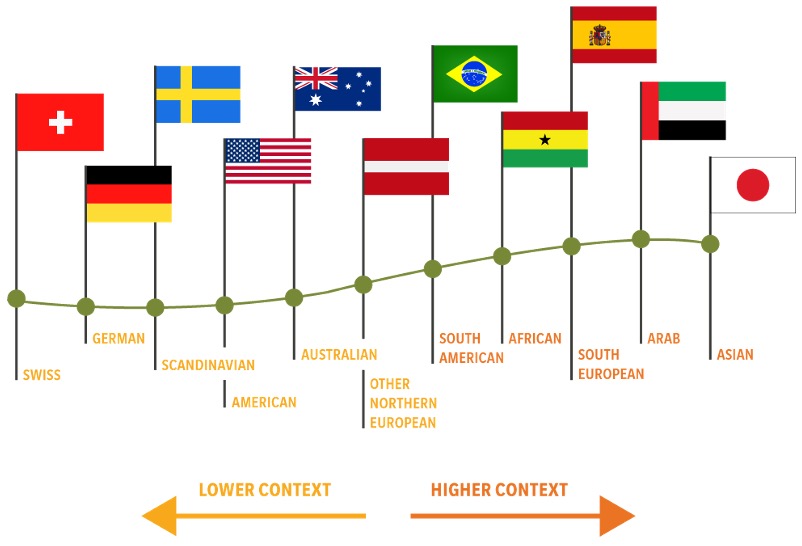Ever wondered how culture is impacting your marketing success abroad?
In this article, Annabel Amann our Head of Client Experience, explains how greater awareness and understanding of nuances of culture and sub-cultures can help businesses effectively engage customers from different markets and regions.
How is ‘culture’ impacting your marketing content?
With 7,111* languages spoken worldwide, societal culture is extremely varied and nuanced, country-to-country.
Just as water bends light, culture has the power to change the direction, impact and meaning of your communications content and thus a customer’s journey.
American anthropologist, Edward T. Hall**, is known for identifying the notion of ‘high-context cultures’ (HCC) and ‘low-context cultures’ (LCC) in communications.
He set-up a framework of culture-based communication styles, explaining how people in different countries decode messages, verbal or non-verbal, based on their cultural expectations and norms.
So, which markets are you doing business in? HCC or LCC?
According to Hall, for effective communication it’s important to start by identifying whether you’re dealing with an HCC or a LCC to determine how people prefer to communicate.
By identifying which market type you are dealing with and its associated cultural traits better, you will understand your target markets needs to cultivate customer engagement and achieve business success.

So, what are some of the traits of an HCC vs LCC market?
When dealing with a LCC market it is recommended to use direct text and practical information rather than bright animated images, which are often seen as too commercial or considered cheap.
LCC’s do not to tolerate ambiguity, so clear and direct communication is key to retain your target audience’s attention and to ensure engagement. Otherwise, you will risk frustrating and losing your target audience to your competitors.
When it comes to websites design and content, it’s important to have a clean and simple aesthetic, with comprehensive links, menus and text that are predictably placed and easy to understand. Its navigation needs to be straightforward and functional. LCC groups typically respond to neutral colours, not bright colours, which can be considered too brash.
So, keep in mind the below traits when marketing to a LCC market:
- Prefer direct, simple, and clear messages
- Low use of non-verbal communication
- High reliance on words and text
- Rely on facts and evidence for business decisions
- Individualism: very independent and self-reliant
If you are a native of a LCC market, your approach will need to adapt for an HCC market, otherwise you are most likely going to bore your target audience.
HCCs are known to respond well to marketing channels and materials with lively animations, with references to groups of people and bright coloured graphics.
When it comes to website design, HCC markets are more receptive to illustrations and links that are more creative and interactive. High-context groups prefer more pop in a website’s colour palette for maximum engagement.
So, keep in mind the below traits when marketing to an HCC market:
- Use indirect and implicit messages
- High use of non-verbal communication
- Low reliance on words and texts, prefers visuals
- Use intuition and gut feel to make purchase or business decisions
- Collectivism: strong emphasis on family/ group effort and control
In Summary:
Identifying whether you are marketing to an HCC or a LCC is an important first step when going beyond your home market. Understanding the cultural differences between your markets can help you effectively connect and engage your target audiences abroad, it’s just a matter of adapting your marketing strategy and your communications approach and you will be well on your way to achieving global marketing success!
Sharpen your HCC and LCC identification skill!
References:
*https://www.ethnologue.com/guides/continents-most-indigenous-languages




